In this Article
Connection.
Whether you create for an audience of 100 or 100,000, the only way to succeed is to find a way to connect with them.
You have a message, a why you’re trying to share with the world. You want to personally build a relationship with your subscribers. You want to teach on topics that matter to them. And you want to build a lasting impact with the content you create.
The best way to do that, even after fifty years, is email.
When we asked professional creators to rate their favorite sales channel, full-time creators rated email’s importance as 8.3 out of 10. Kit creators sent 21 billion (yes, with a b) emails in 2022, equivalent to 689 emails sent every second.
That’s a lot of emails.
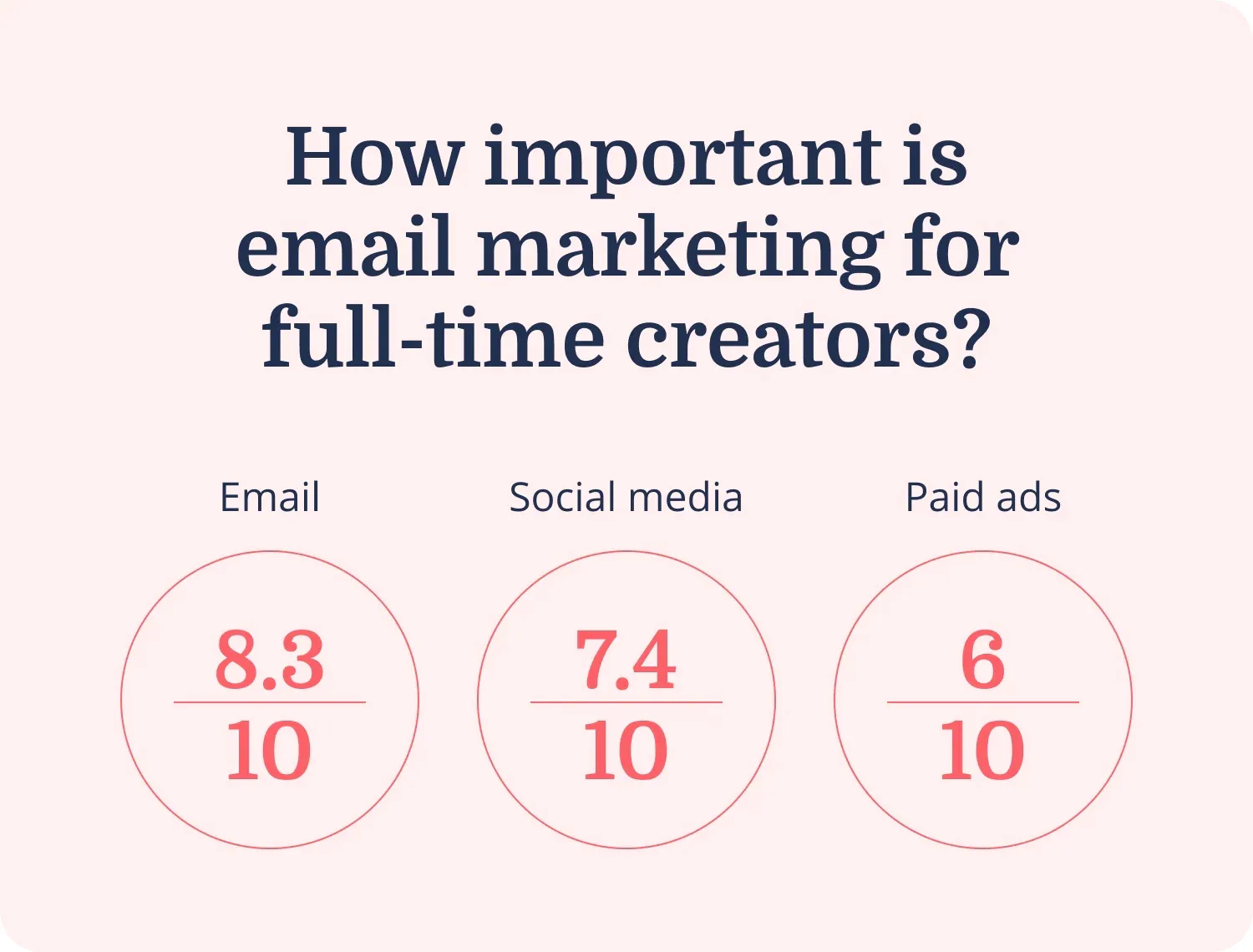
Full-time creators consistently rate email as their top channel.
Email is a personal channel. You own the relationship with your audience. You’re not shouting from the rooftops, hoping a cute selfie or trendy dance move will be enough to get your audience to listen to what you have to say.
Instead, you’re starting a conversation. And for every $1 marketers spend on email, they average $36 in return. What kind of channel can deliver ROI like that?
Email, that’s what.
Email marketing strategies for you to send the best emails ever
If you’re looking to get started with email marketing—or just want to maximize this powerful marketing channel—here are our 25 best email marketing tips.
1. Select the email marketing service that’s right for you
With so many email marketing tools on the market today, you need to think about an email service provider that can:
- Send emails on your behalf (duh!)
- Has an easy-to-use email builder or ability to code emails
- Gather leads and create sign-up forms that comply with international regulations like GDPR
- Includes a few bells and whistles, like automated emails, scheduled send times, and segmentation features
👋 Hi, we’d love to help! Kit can do all of these things and more. Check out how we help creators send emails that feel true to them.
2. Make yourself familiar with rules and regulations
You’ve decided to take the leap and use email marketing to grow your business—congratulations!
Before you get started, take the time to brush up on the different rules and regulations that apply to subscribers based in different jurisdictions.
The first and most important rule to know is that you can’t buy an email list. That puts you firmly into “spammer” territory. And it’s a poor strategy if you actually want anyone on your list to pay attention to what you have to say.
Beyond that, you’ll want to study up on these key laws if you plan to send emails:
- CAN-SPAM Act: This law requires you to identify yourself clearly and give your subscribers an easy way to opt-out, among other things. This government guide gives the full overview.
- GDPR: This privacy law applies to subscribers based in Europe, but its passage has created new standards for marketers everywhere. Essentially, you’ll need to make sure you keep a solid record of data collection and explicit consent from your subscribers to opt-in, but this official guide from the EU details everything you need to know.
- CCPA: This California privacy law is similar to GDPR in that it’s mainly about how and where you collect data about your subscribers. You can read more here.
All of these acronyms can be overwhelming. We recommend checking with legal counsel if you’re ever unsure about a specific regulation just to be on the safe side.
3. Know your audience and remain curious
It’s the golden rule of marketing for a reason.
Audience research is important so you know who your ideal client or customer is, but that’s just the beginning. As your email list grows, your audience will likely evolve along with it.
Stay curious and keep asking for feedback.
The more you get to know your subscribers, the more you’ll know how to serve them. And the better you can serve them, the more trust you will build. This trust is crucial when you start to pitch your freelance services, digital products, or physical products.
4. Offer something of value to attract the right subscriber
Before you write any email content, ask yourself, What would bring the most value to my ideal customer?
Once you have your answer, outline your email content and pair it with other special offers, bonuses, or freebies that will give your email subscribers even more value.
One of the best ways to offer something of value to your email audience is to offer lead magnets on your blog, website, podcast, or any other content platform you run.
That’s what VC expert John Gannon did to grow his newsletter by 20,000 subscribers in just five years.
“Every year, we run a yearly venture capital salary survey, and that’s something that’s hard to replicate,” he says. “We survey all of the VCs on my newsletter list and then also speak with the firms we have close relationships to, aggregate all that data, and design extremely detailed pieces of content. We create a private version for respondents and a public version that becomes one of our biggest lead magnets.”

An example of a killer lead magnet from Venture Five Media.
These lead magnets will help you educate your audience about the importance of a topic within your niche and help you build trust. The right freebies and forms can put you above the average opt-in rate of 2%.
Email marketing best practices for managing your list
These nuts-and-bolts email marketing best practices ensure that your email list is in tip-top shape:
5. Reconfirm interest with a double opt-in
You only want subscribers on your email list who want to be on it. You also want to eliminate the amount of spam email accounts that will sign up for your email list. Both of these things can be accomplished when you use a double opt-in.
When you use a double opt-in, you’ll give subscribers the opportunity to confirm that they want to add their email address to your email list. This ensures your subscribers are engaged with your email list and truly want to be there.
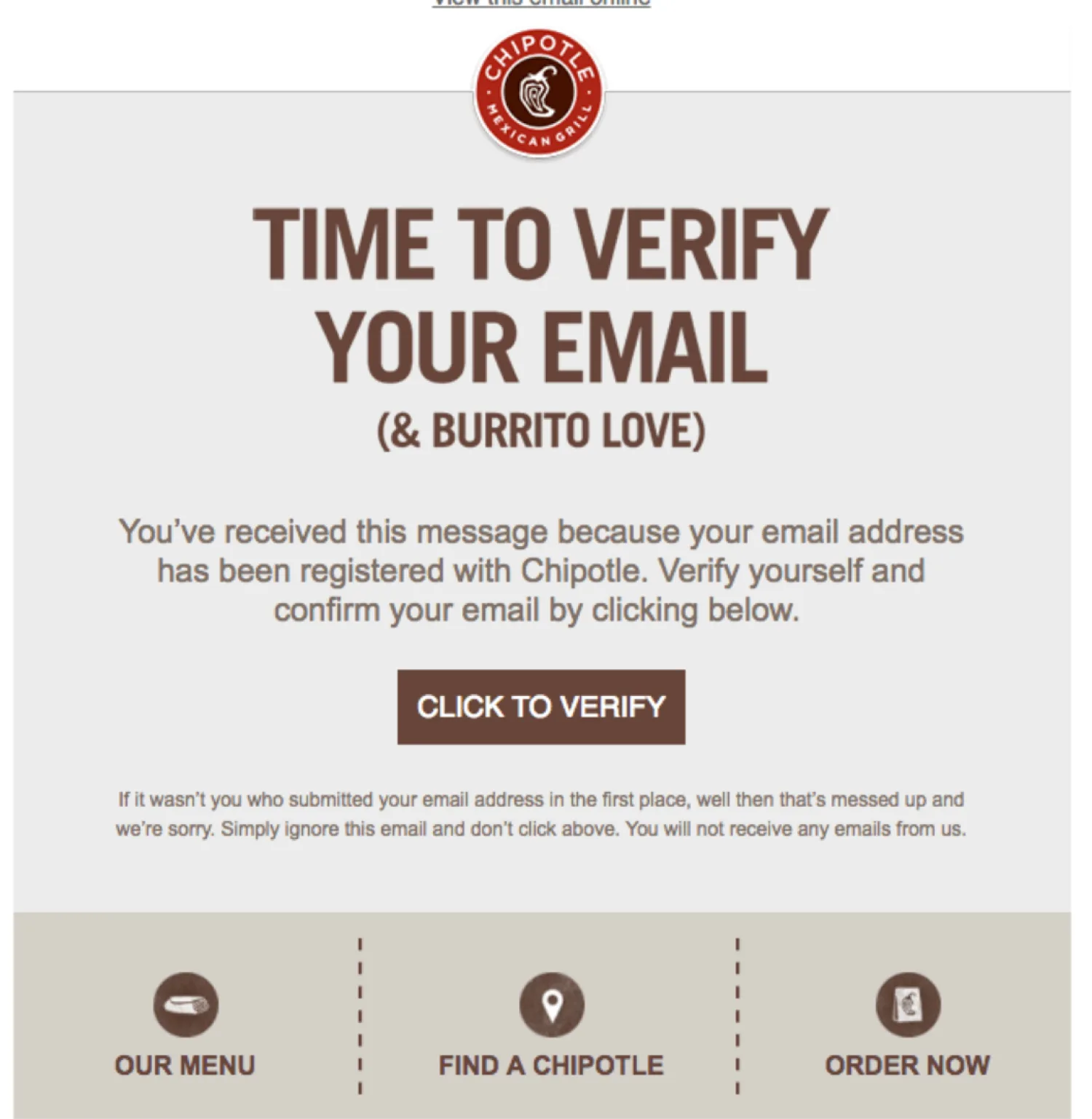
Your confirmation email doesn’t have to be as fancy as this one from Chipotle, but you should make sure it has a very clear CTA to confirm their subscription.
This is also an important step to comply with GDPR regulations if you’re sending emails to subscribers based in Europe, so we recommend using the double opt-in with your landing pages and opt-in forms.
6. Always keep a clean email list
A large email list isn’t always a better one.
You can have hundreds of thousands of subscribers, but if barely anyone opens or clicks on your email, you’re not going to grow your business.
Instead, focus on building the most engaged email list possible.
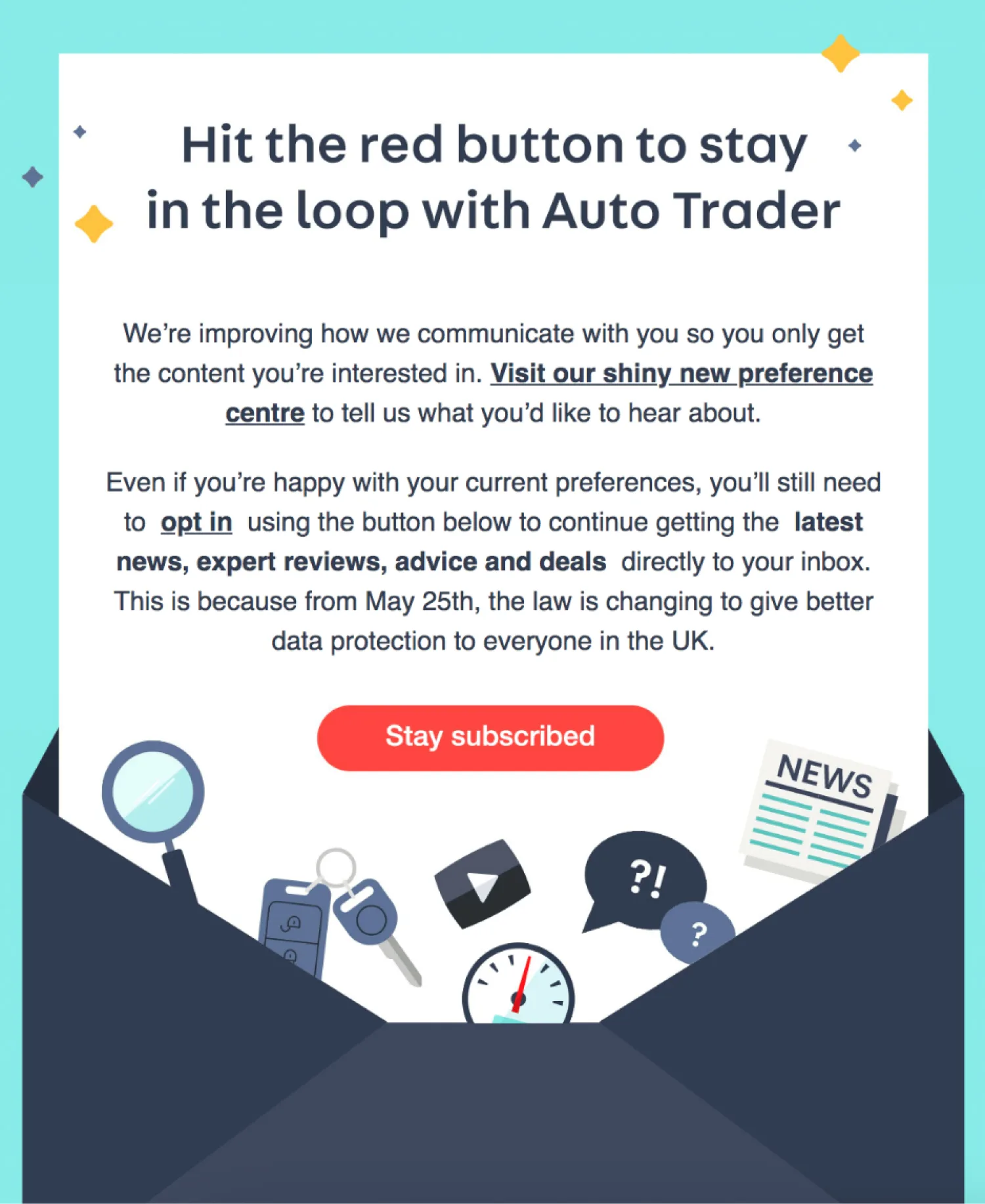
A great, simple re-engagement email example from Auto Trader.
You want to attract and nurture email subscribers who are excited to hear from you and want to open, click, and interact with all of your emails. At least once a quarter, do a list hygiene check:
- Send a re-engagement email campaign to any subscribers who haven’t engaged with an email in 90 days
- Prune any subscribers with email addresses that come back with a hard bounce, who have marked you with a spam complaint (the worst!) or those who still don’t engage with your email campaign
- Make sure you’re honoring unsubscribes on a regular basis as well
7. Ask your subscribers to safe-list your email
If you’re not sure if your email is landing in the inbox, spam folder, or a promotional tab, then ask recipients to safe-list your email. Not every subscriber will do it, of course, but adding your email address to their contacts helps your email deliverability in the long run.
You can show them an easy tutorial of how to do this in your first email after they’ve confirmed their email address or in a custom thank you page. Keep in mind that each email host handles allowlisting a little differently, so it may be helpful to link out to the specific instructions.
8. Segment your list for more precise messaging
Within your audience, you may find variations in stage of life, business, skillset, or product interest. Rather than send every single person on your list the same email, use email segmentation.
This is a great way to build in additional personalization, which will help your subscribers feel cared for and understood. You don’t have to segment every single email, but by keeping your audience’s goals in mind as you create content, you’ll find more targeted messaging will make them more likely to engage or convert.
9. Never stop growing your email list
Understanding what parts of your acquisition efforts are working and what could be improved is key to ensuring your email list is always growing. Rather than look at the number of subscribers coming in each day, though, think about your overall list growth rate.
[(number of new subscribers) – (number of unsubscribers + spam complaints)] ÷ total number of subscribers} * 100
Not sure how to gain more subscribers? Kit creators gained 183 million new subscribers in 2022, equivalent to 159 subscribers signing up via opt-in forms every minute. Here’s how they did it:
- Develop value-add lead magnets like ebooks, free courses, or webinars to turn social media followers into email subscribers. (See #4 for more.)
- Run paid ads to those lead magnets to drive more signups
- Ask existing subscribers to forward and share your email
- Add a newsletter referral program to your email marketing to grow 35% faster
But you don’t need to do every single one of these ideas all at once.
That’s why collecting and analyzing data around your email marketing performance is so important. Monitoring key performance metrics (KPIs) like list growth rate, unsubscribe rate, and click-to-open rate (CTOR) gives you a clear picture of how well you’re drawing in new subscribers—and how engaged they are once they’re on your list.
Once you know that information, you can prioritize the programs that best fit your current needs.
Tips to write email marketing content that converts
Once you’ve set up an email marketing strategy, you’re ready to start sending emails to your subscribers. Here are our top email marketing tips to write compelling, relevant emails they’ll love:
10. Optimize your email subject lines and preheader text
Your email subject line makes or breaks your open rates.
When you write your email subject lines:
- Keep the length to around 50 characters or less so it is visible on desktops and mobile devices.
- Tease what your email will be about without giving it all away.
- You can add emojis if it fits your brand personality
- Avoid spammy words like “final,” “state-of-the-art,” “discount,” “exclusive,” or “free”
Subject lines work together with your preheader text, the small blurb that shows in the email preview in your subscriber’s inbox.

Your subject line and PHT work together to make an impression on your subscriber.
Typically, the blurb is taken from the first sentence of your email. But you can customize your own preview text in most email builders. You’ll want to make it count since it’s your last chance to hook a reader and convince them to open your email.
11. Teach everything you know
Don’t sell, teach.
When you teach everything you know, it not only builds a strong connection with your ideal audience, it also builds authority and credibility.
“You have to have something that works first,” says fabric designer Bonnie Christine. “You have to know your ideal customer inside and out. You have to know their heart, you have to know what keeps them up at night, and then you have to have something that truly serves them.
Remember, email marketing is a lucrative channel, but you have to do the work first. Focus on connection and education with your subscribers to best serve them, and the growth will come.
Sharing your unique creative process and philosophy may be the perfect inspiration someone needs to unlock their next level of motivation.
12. Talk about benefits over features
One of the most common email conversion copywriting mistakes we see in email marketing is when content creators spend the majority of their email talking about the features of their offering rather than the benefits.
Leading with benefits allows you to:
- Speak to the emotional value your customer or client will receive when working with you
- Create a stronger connection than simply listing the features of what you’re selling
- Give your audience more context why your products or solution matters to them or solves a problem
You can make small tweaks to your messaging to ensure the benefits come first to help you increase your conversions.
13. Write like you’re talking to a friend
As a creator, you’re building a brand based on you.
As you write your emails, picture yourself passionately talking about the topic with a friend over a cup of coffee. Think casual but professional. If you want to use contractions and exclamation points, do it! If you wouldn’t use jargon-y buzzwords like “synergy” in a sentence in real life, then don’t use it in your emails.
Choose a voice for your emails that feels like you.
14. Add social proof wherever you can
77% of consumers “always” or “regularly” read online reviews before making a purchase. People still rely on recommendations and word-of-mouth to make their decisions more than any other marketing channel. With this in mind, it’s no surprise that including social proof in your emails can help you increase conversions.
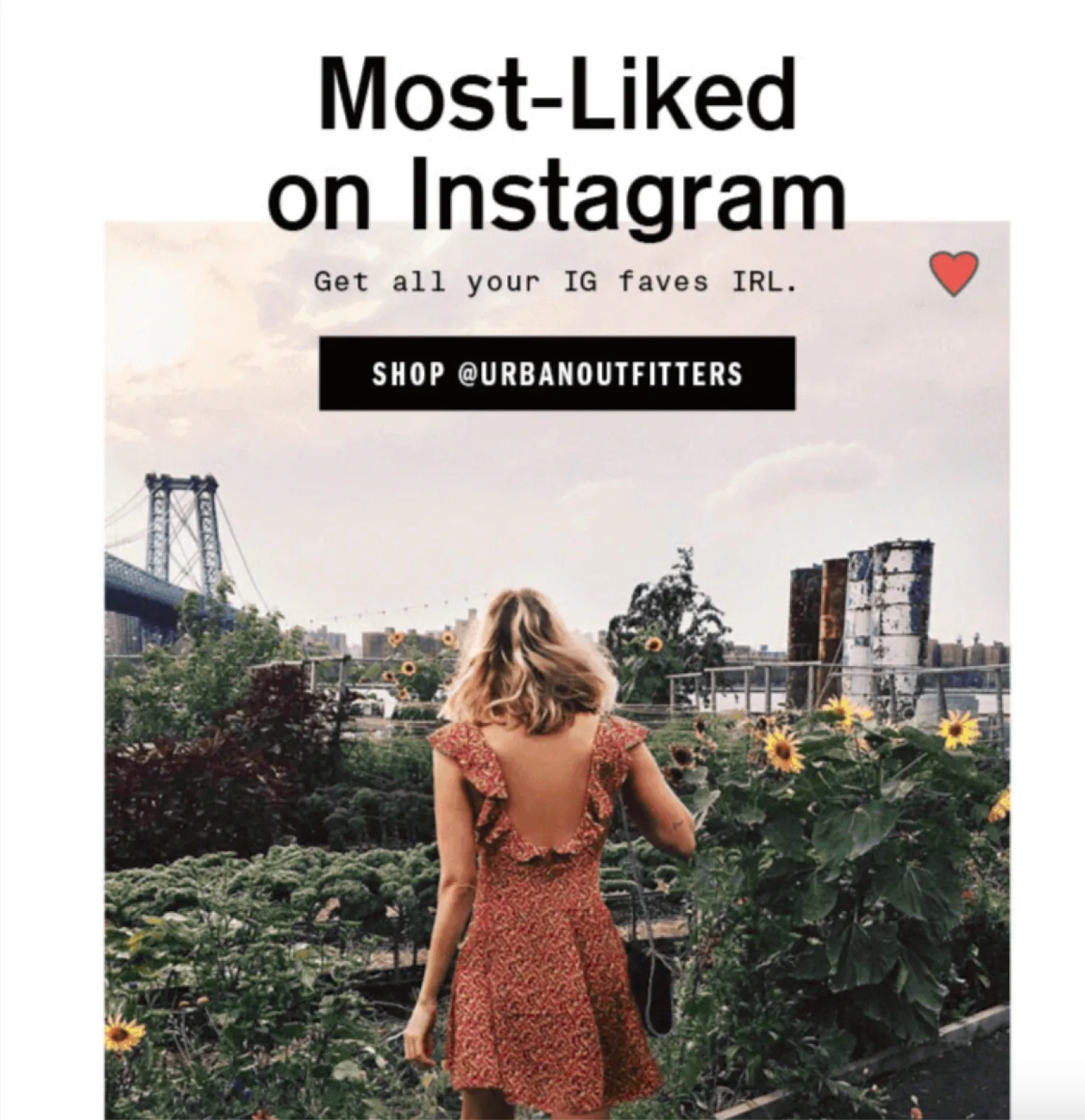
Showcasing proof that your products are popular on social media or through online reviews is a great way to drive more sales.
Social proof is one of the best ways to build trust because it gives your audience an inside look into the people you’ve already helped. You can add social proof by:
- Including a written or video testimonial
- Creating a case study
- Integrating reviews and ratings from third-party sites
- Promoting industry awards
Email marketing design best practices
Now that you have your content settled, it’s time to build your email. You don’t have to be a designer or a developer to send a great-looking email. Take a look at our free email templates and keep these design best practices in mind:
15. Be aware of the proper email address etiquette
Email is a personal channel, so keep it intimate and share the name of a person behind the company in the sender name.
For example, many of our company emails will say “Isa at Kit” or “Nathan at Kit” rather than “Kit,” so our customers get to know the people behind our platform.

Two different ways to optimize your sender name.
For the same reason, avoid using a “no-reply” as the sender’s email address:
- You’ll lose trust with your subscribers when they inevitably try to reply to the email and get a bounce back. Make sure anytime you send an email, there’s an inbox ready to receive replies.
- If you’re trying to create a personal connection, then your message won’t match your sender name. It’s a small detail, but it matters.
Along with sending emails from a personal name behind your business, you can also build trust by adding a friendly headshot of the person. This is meant to help your subscribers put a face to the name so they can create a personal connection with your brand.
16. Make subscribers feel special with personalized emails
There’s no denying that we love to hear someone say our name. It helps us feel seen in a world that feels noisy and crowded at times.
Take this simple, plain text-style email promoting an upcoming course from astrologist Spirit Daughter:
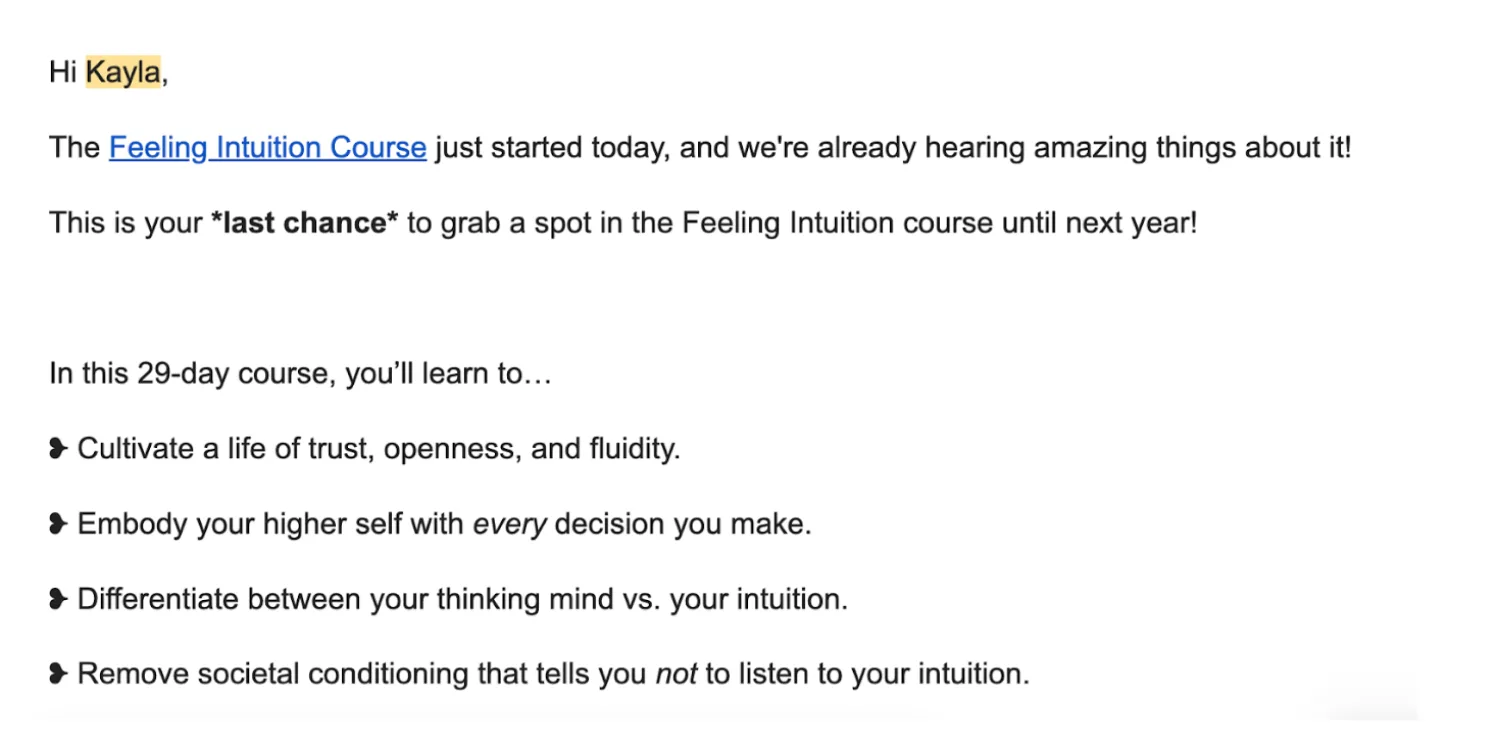
A personalized email from astrologist Spirit Daughter.
Personalizing emails with a custom greeting will help you create a stronger connection with your subscribers. But “first name” is only the beginning of the kind of personalization you can do for your subscribers. Think about what’s going to resonate the most—the products their most interested in, their geographic location, or even local pop culture.
“We keep people posted on our tour dates or local options with segments, at least when we’re on the road and playing live shows,” guitarist Ryan Baustert says about promotions for his band Throw the Fight. “Whenever we’re going to be in town, we use Kit to send an update to people in those geographic radiuses so they can come see us play.”
There are a few ways you can do this in Kit, and it only takes a few seconds. That small time investment can reap big rewards by helping you build trust.
17. Include a strong call-to-action
You can’t increase conversions without a clear call-to-action (CTA). Stick to one central CTA for each email, but you can switch up which CTA you focus on with each email broadcast.
For example, an educational email might ask your subscribers to read a blog post or do an activity inside a downloadable workbook you’ve created. A hard-sell email, however, might have the CTA of visiting your sales page or buying your product through a direct digital checkout page.
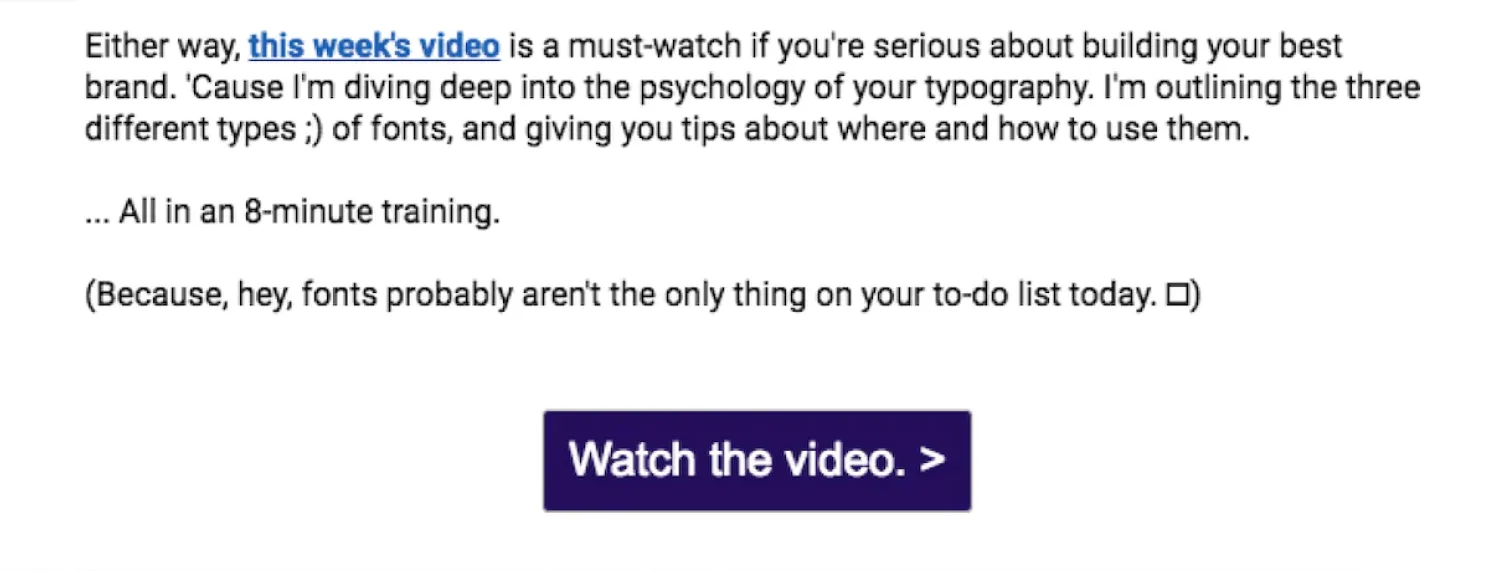
Your CTA can be a button or an in-text link, but either way, it should include action-oriented words that encourage your subscribers to click. Think verbs like, “learn,” “see,” “get,” or “explore.”
18. Add alt-text on images and CTA buttons
Nothing is worse than spending tons of time crafting an email…only to have it be impossible for your subscribers to read it.
Lots of weird, funky things can happen with email—some mailbox providers automatically turn images off, or sometimes they just don’t upload or display properly.
To make sure you have a smooth user experience in your emails, add alt-text on images and CTA buttons. These are short, text-based descriptions of the image, so even if it doesn’t load, your subscriber can still get the message.
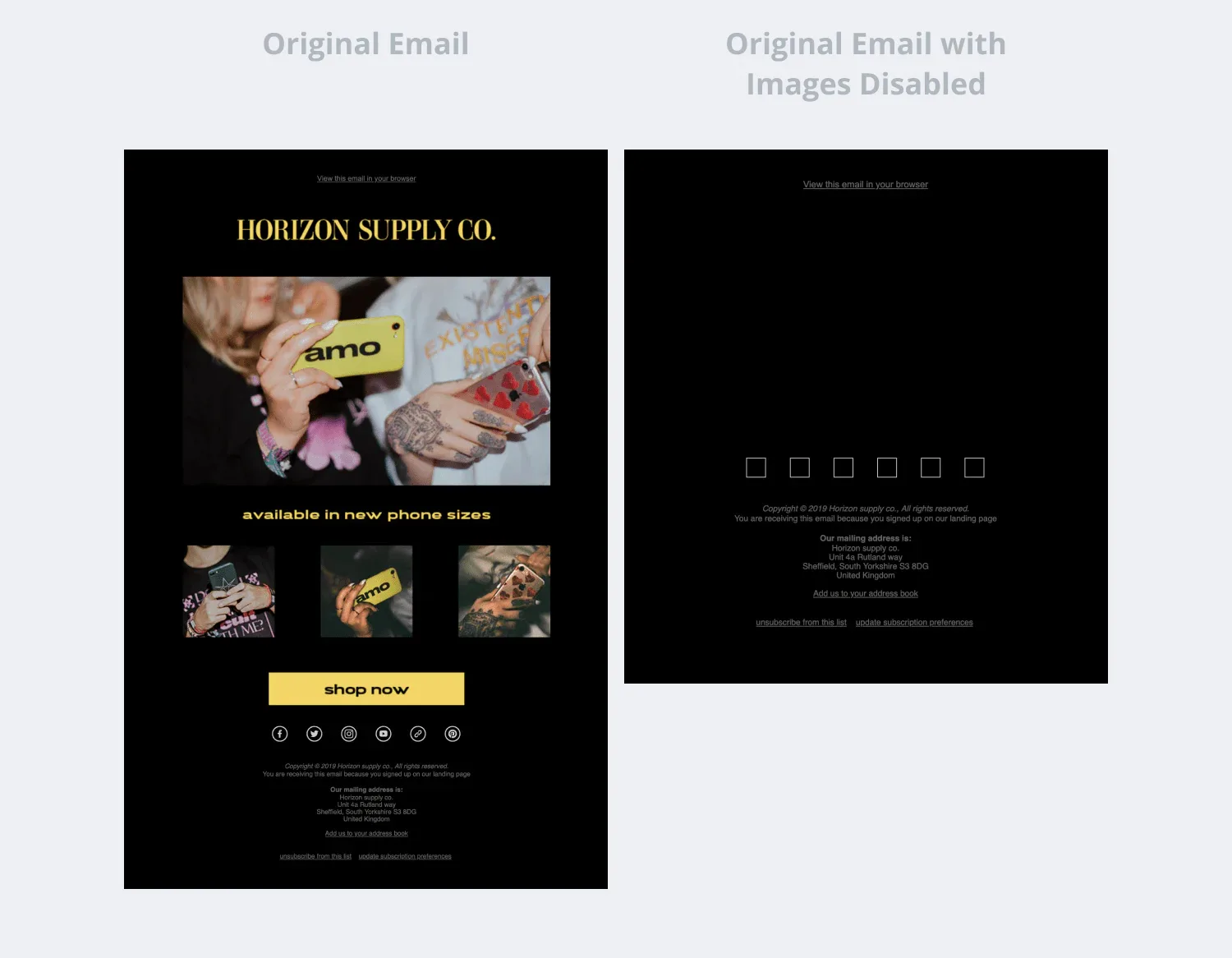
19. Incorporate an easy-to-find unsubscribe button
It sounds counterintuitive, but hear us out: You need to make sure your subscribers can unsubscribe in one click as easily as possible.
First, because legally, you have to include an unsubscribe link that allows subscribers to opt-out of your email list at any time.
But more importantly, if someone doesn’t want to receive your emails, it’s best to let them go. If you continue to email them after they’ve tried to leave, you run the risk of annoying them, and they take to social media about it. Worst case, they mark you as spam, damaging your sender reputation and making it more difficult to send emails in the future.

Our email templates include an unsubscribe link at the bottom of every email, so you don’t have to worry.
20. Send plain-text emails and make them easy to scan
Why do people read your emails? It’s not because of the design but rather the value of the content inside your email. With this in mind, try experimenting with sending plain-text style-emails.
Not only do they eliminate distracting visuals but they also feel more like an email from a friend than a visual-heavy promotional email. Instead, keep it short and sweet and make it easy to scan by using headers, shorter paragraphs, and bolding or italicizing a few key words.
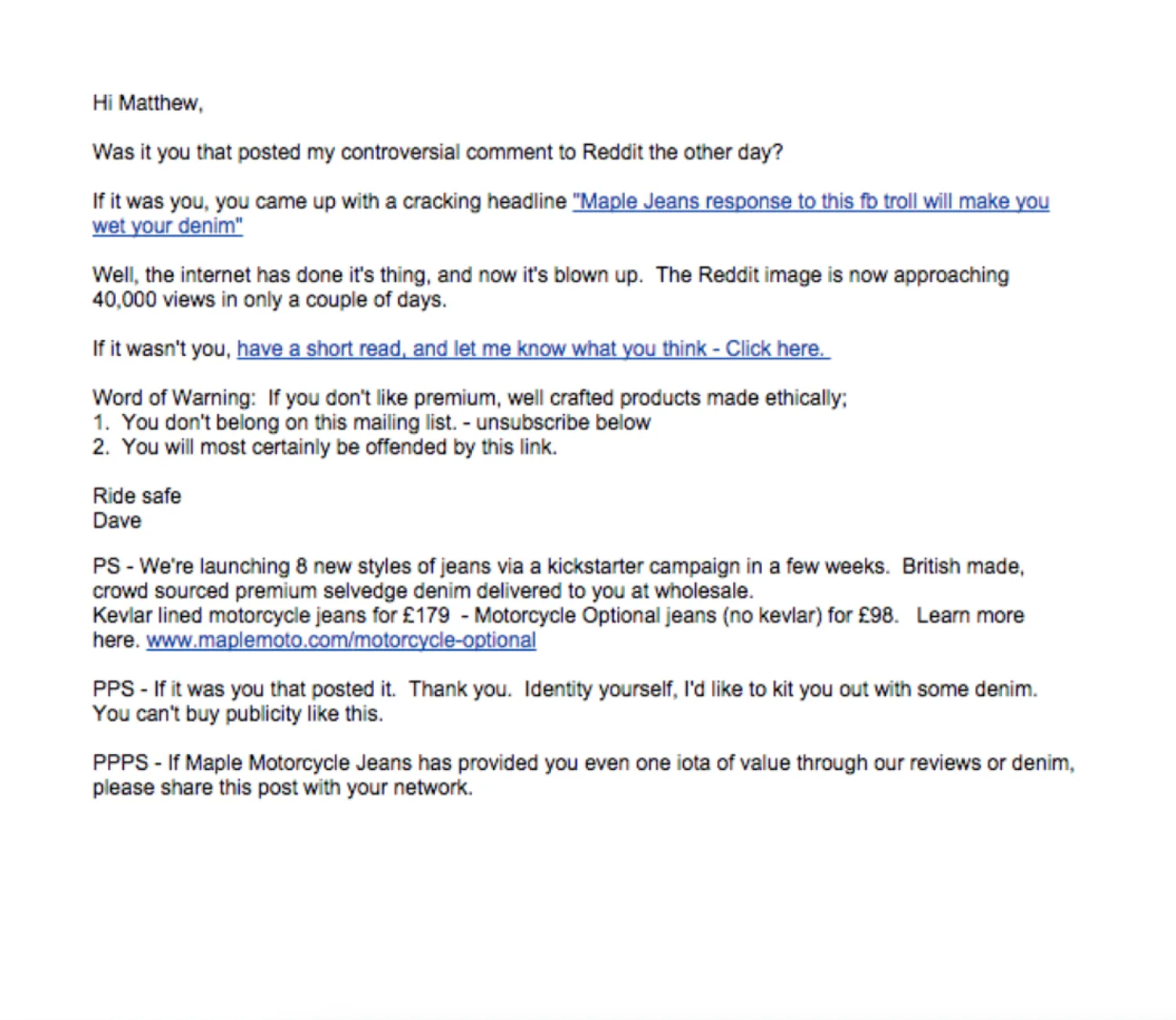
A very humorous “plain text” email.
You can still include imagery in your Kit emails when applicable. But keeping imagery to a minimum since images reduce your load times and could mark your emails as potential spam.
21. Preview and test your email before sending it
By previewing your email, you’ll see what it looks like when accessed on each device and make sure it is formatted in a user-friendly way.
Ask yourself:
- Does the content look easy to digest?
- Are all images displayed properly?
- Is my email optimized for mobile devices?
Also check for any spelling or grammar errors during this time. Sending an email with a typo is one of the worst feelings because you can’t take the content back. But don’t worry, we’ve all been there.
Just check your email one last time to be safe.
More best practices to optimize your email marketing
Ready to go above and beyond? Here are a few final email marketing tips to take your email marketing program to the next level:
22. Make your emails accessible to everyone
As you create your email marketing strategy, remember to think about your audience—whether they can see your emails or not. It’s a good idea to:
- Always include alt-text on images and CTA buttons (see #18)
- Think about color contrast in your designs, such as dark text on a light background
- Avoid frenetic GIFs or animations that can trigger seizures
- Make your emails scannable with plenty of space around headers and paragraphs
- Use large, readable font
Every email client processes your campaign differently—so what appears in your Gmail inbox may look very different on Yahoo or Outlook. Making these small modifications can help make sure if something goes sideways everyone can read it, whether they’re using screen readers or simply have their images turned off.
23. Schedule your email to send at optimal times
You don’t have to hit “send” the moment you finish an email.
The best times to send your emails may differ depending on the major time zones your audience is located in, but experts typically recommend sending emails on Tuesdays and Wednesdays around 10-11 AM for your desired time zone.
When we asked creators, most send their emails on a Tuesday.
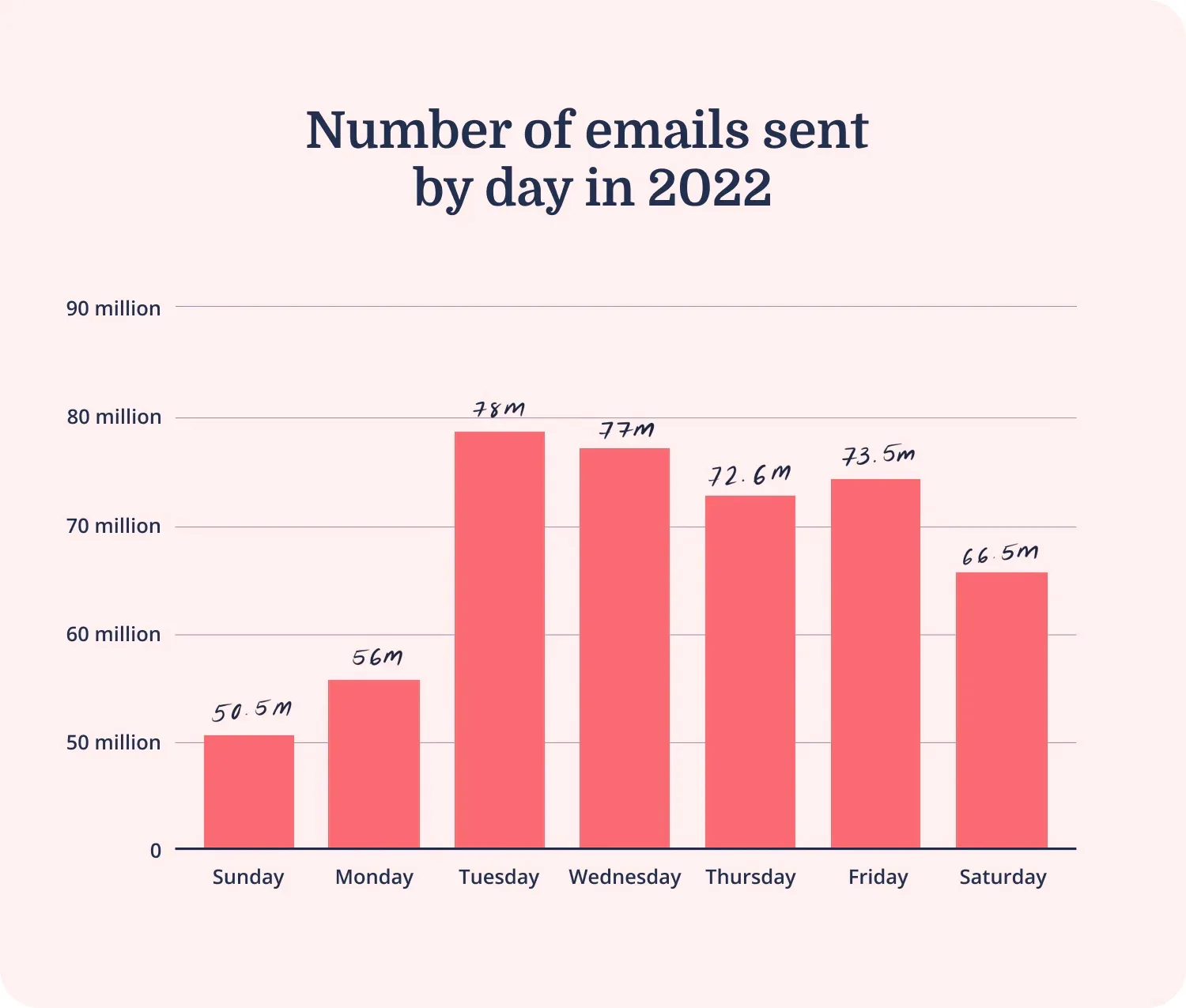
When creators typically send emails.
While these recommendations offer a good place to start, test different days and times to see what’s best for your audience. You can measure this by taking a peek at your open rates and comparing them over time.
24. Don’t forget to A/B test
While we’re all about best practices like these, every audience is different. The only way to know what’s going to resonate with your audience is to test it out.
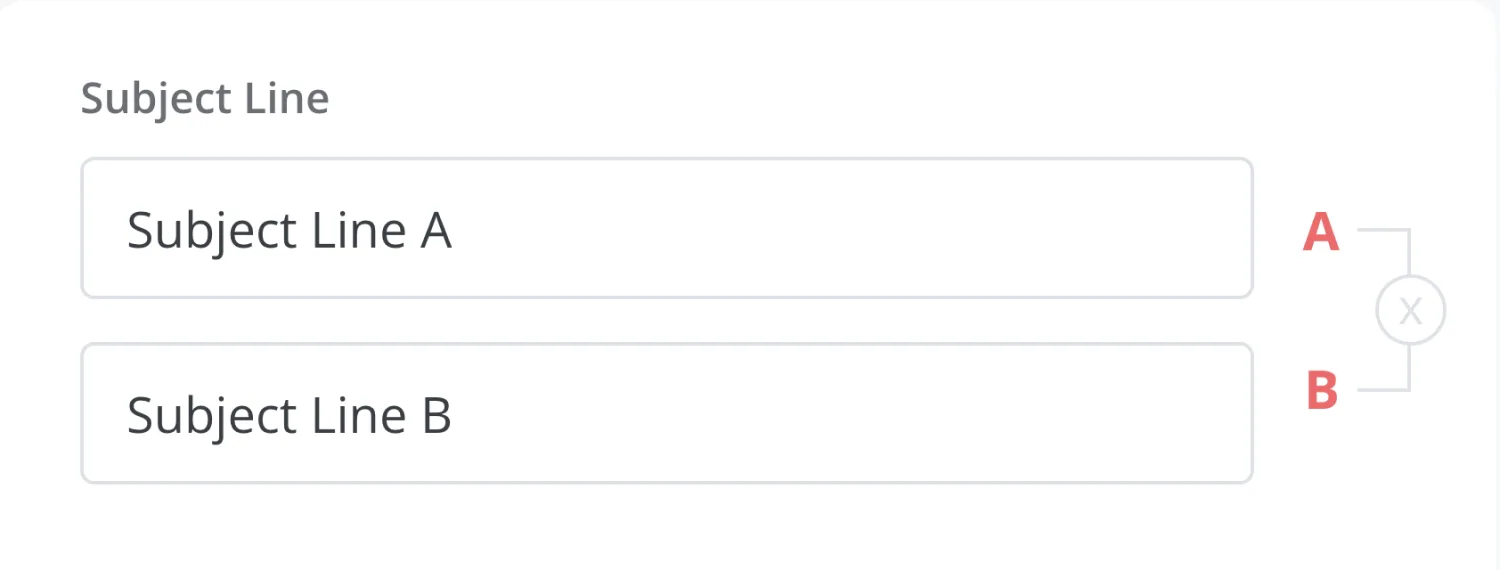
A/B testing pits one element of your email against another. Think subject lines, email colors, layout, CTA button placement…you can A/B test anything! Just remember that if you’re going to do an A/B test, change only one element. That way you’ll have a clear winner for a future email design.
25. Monitor your email marketing metrics
How did your last email marketing campaign do? It’s important to check in with your email marketing metrics on a regular basis. At a minimum, you’ll want to look at your:
- Open rate: How many people opened your email.
- Click rate and click-through rate: How many clicks your emails received and how many people clicked through to your landing page.
- Conversion rate: How many people made a purchase based on your email.
With this data in hand, you can better craft a more targeted email marketing strategy.
Put your email marketing on autopilot with Kit
Phew, are you ready to send great emails? There’s a lot to keep in mind when it comes to building a great email marketing strategy. There’s good news, though: Whether you’re an email marketing pro or just getting started, Kit is here to help.
Built with creators in mind, Kit’s suite of features help you grow your business—and can automate most of the process so you don’t have to worry over every last detail. See how Kit makes it easy.
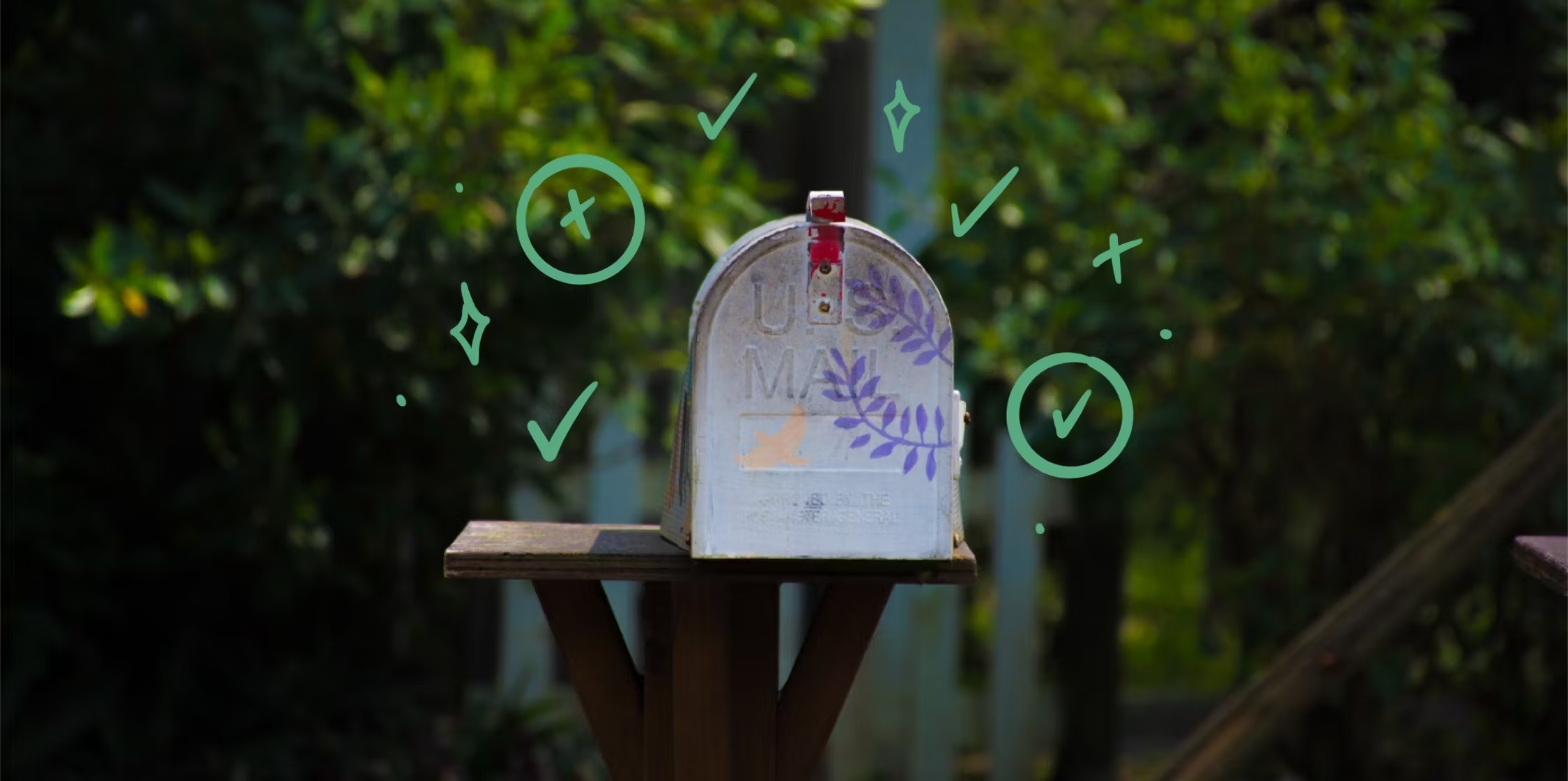

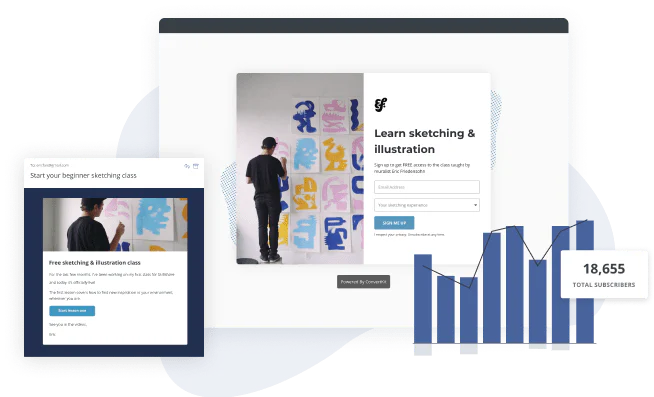

![How to create your 1st free or paid email course in a single weekend [template included]](https://media.kit.com/post/HERO-create-paid-email-course.jpg?fm=webp&w=320&q=70)
